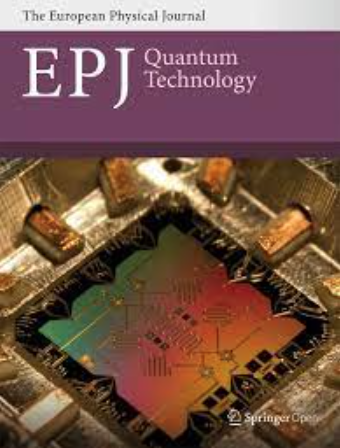冷原子干涉仪椭圆拟合误差研究
IF 5.8
2区 物理与天体物理
Q1 OPTICS
引用次数: 0
摘要
椭圆拟合是一种用于提取冷原子干涉仪差分相位的技术,尤其是在需要抑制共模噪声的情况下。我们使用数值模拟来研究椭圆拟合过程中的误差;特别是由于存在加性噪声、椭圆偏移和振幅的线性漂移以及边缘归一化可能产生的误差。误差有两种表现形式:椭圆相位测量偏差和共模相位噪声抑制不完全。我们针对三种不同的椭圆拟合算法量化了这些误差,并讨论了这些结果对未来冷原子传感器的适用性。本文章由计算机程序翻译,如有差异,请以英文原文为准。
An investigation of errors in ellipse-fitting for cold-atom interferometers
Ellipse fitting is a technique which is used to extract differential phase in cold-atom interferometers, particularly in situations where common-mode noise needs to be suppressed. We use numerical simulation to investigate errors in the ellipse fitting process; specifically, errors due to the presence of additive noise, linear drift in ellipse offset and amplitude, as well as an error that can arise from fringe normalisation. Errors are found to manifest in two ways: bias in the ellipse phase measurement and incomplete suppression of common mode phase noise. We quantify these errors for three different ellipse fitting algorithms and discuss the applicability of these results to future cold atom sensors.
求助全文
通过发布文献求助,成功后即可免费获取论文全文。
去求助
来源期刊

EPJ Quantum Technology
Physics and Astronomy-Atomic and Molecular Physics, and Optics
CiteScore
7.70
自引率
7.50%
发文量
28
审稿时长
71 days
期刊介绍:
Driven by advances in technology and experimental capability, the last decade has seen the emergence of quantum technology: a new praxis for controlling the quantum world. It is now possible to engineer complex, multi-component systems that merge the once distinct fields of quantum optics and condensed matter physics.
EPJ Quantum Technology covers theoretical and experimental advances in subjects including but not limited to the following:
Quantum measurement, metrology and lithography
Quantum complex systems, networks and cellular automata
Quantum electromechanical systems
Quantum optomechanical systems
Quantum machines, engineering and nanorobotics
Quantum control theory
Quantum information, communication and computation
Quantum thermodynamics
Quantum metamaterials
The effect of Casimir forces on micro- and nano-electromechanical systems
Quantum biology
Quantum sensing
Hybrid quantum systems
Quantum simulations.
 求助内容:
求助内容: 应助结果提醒方式:
应助结果提醒方式:


